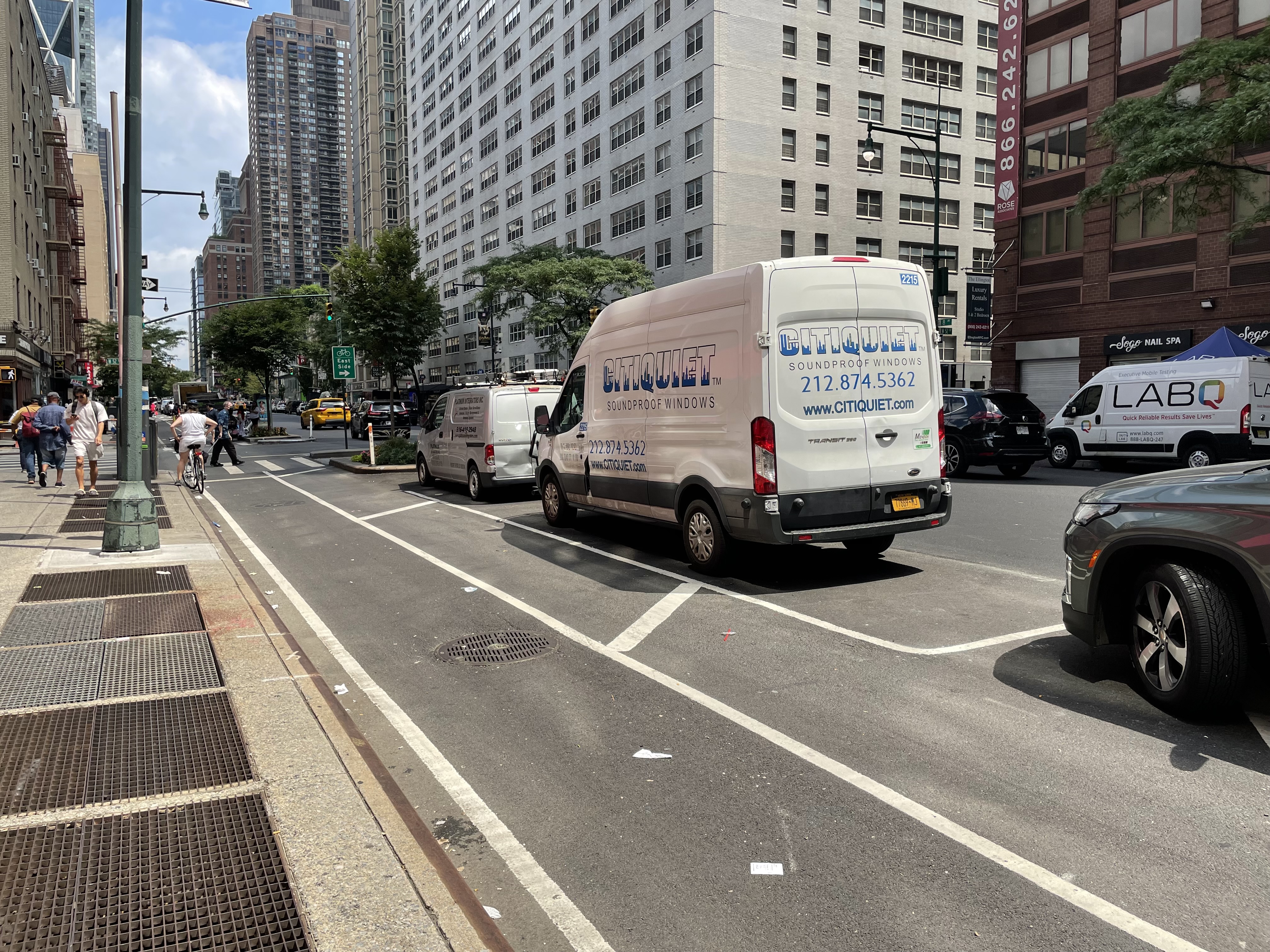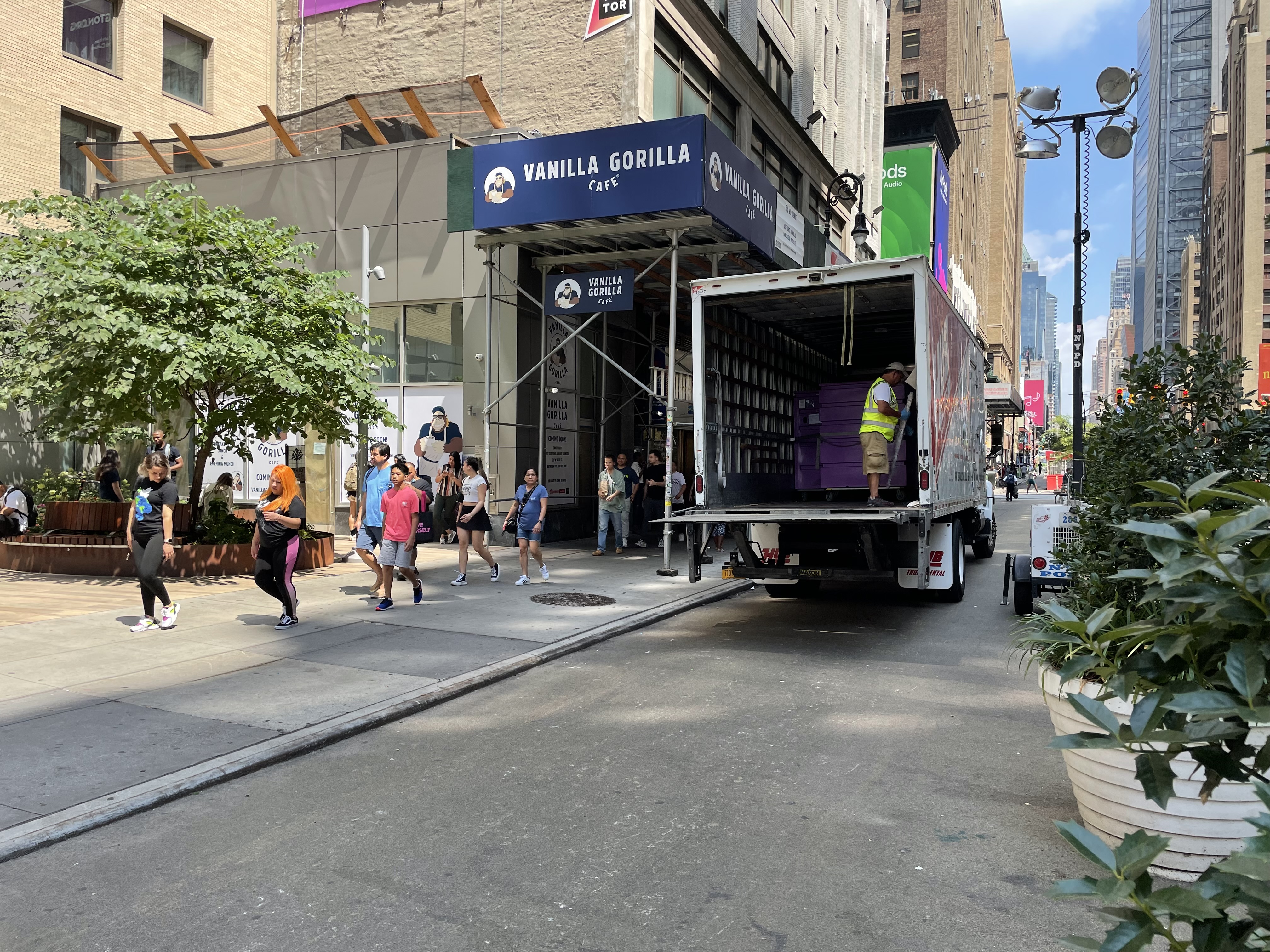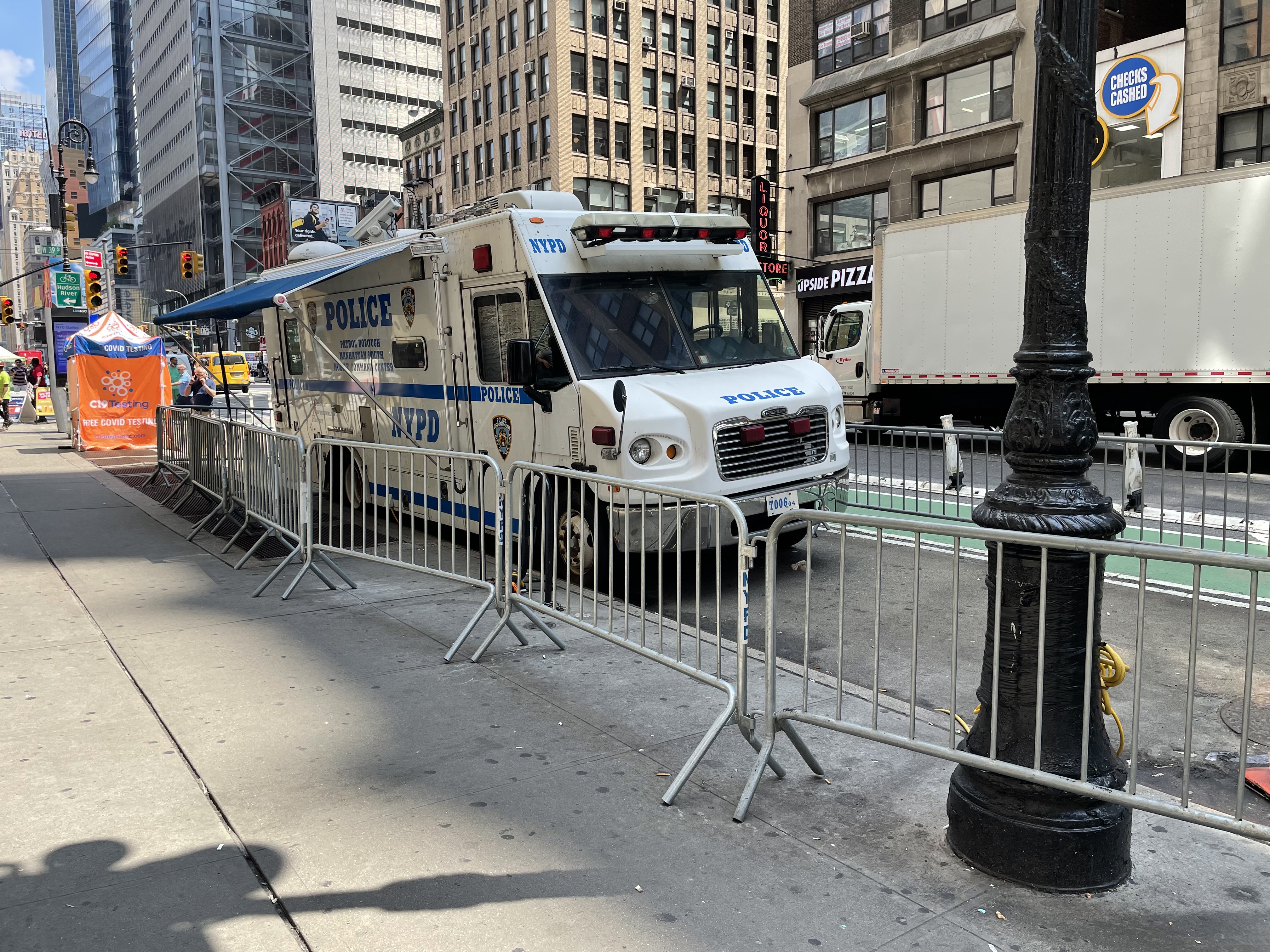Eighth Ave. Road Diet Marches North, But Community Wants ‘Concrete’ Plan

More, please.
A Manhattan community board is generally supportive of a Department of Transportation plan to increase pedestrian space on Eighth Avenue while also narrowing the wild west roadway, but wants the agency to fully build out the changes with concrete, not just paint.
The DOT presentation to Manhattan Community Board 4 on July 20 [PDF] revealed the latest advance in the ongoing effort to tame Eighth Avenue — and the basic idea seems designed to please the progressive board: the existing four northbound travel lanes on Eighth Avenue will be reduced to two lanes between West 43rd and 51st streets to make room for a painted, 19-foot-wide sidewalk extensions on the west side of the street.
Meanwhile, the existing protected bike lane will shift from hugging the west side sidewalk to a new location between a floating parking/left-turn lane and the edge of the sidewalk extension, which will be delineated by planters the way it is further south, in order to separate cyclists and pedestrians who sometimes spill into the curbside bike lane. The redesign will retain the existing pedestrian islands at West 43rd and West 50th streets, and will add a painted pedestrian island on the north end of West 50th Street. The existing bus stop and commercial loading lane on the east side of the street will remain unchanged.

The changes are part of a gradual change in the road design that’s been heading north on the avenue — one that the local community board says is good, but could go further.
“Manhattan Community Board 4 welcomes and eagerly awaits the installation of these long overdue improvements on Eighth Avenue,” said the board’s chairman, Jeffrey LeFrancois. “But there needs to be … actual capital dollars to make sidewalk expansions not just paint, but actually concrete.”
The plan creates a similar configuration as the one that exists south of West 43rd Street, where the bike lane fits between the painted sidewalk extension and plastic bollards, as seen in the photo below of Eighth Avenue north of West 36th Street:

The redesign also adds a commercial loading lane between West 42nd and 43rd streets and one between West 49th and 50th streets, and maintains the loading zone between West 46th and 47th streets. The loading zone between West 44th and 45th streets will be shrunk slightly in order to make room for a split phase left turn at West 45th Street. Split phase left turns are also being added to the intersections at West 47th Street and West 49th Street.
There’s a clear need for space for commercial trucks, and while the existing commercial parking between West 51st and 52nd streets was working as intended, there were other sections of Eighth Avenue where the sidewalk extensions were turned into parking spots for trucks or the NYPD, which highlighted LeFrancois’s call for neighborhood loading zones in the area.
The road diet is even more dramatic than previous phases in the Eighth Avenue slimdown. Making more room for pedestrians on Eighth Avenue has been an ongoing effort at the DOT.
As recently as 2018, the city devoted six entire lanes to moving cars on the road. But in 2019, the DOT began a road diet mostly focused on the area between West 38th and 43rd streets, which added painted sidewalk extensions and hardened the bike lane with plastic barriers near the Port Authority Bus Terminal. That work sought to change the allocation of the street from 70 percent for cars, 30 percent for pedestrians and nothing for cyclists to 50 percent for cars, 41 percent for cars and 9 percent for cyclists.
This road diet north of 42nd Street goes even further on road share for pedestrians. Before the pandemic, the DOT said that pedestrians accounted for 88 percent of roadway users at West 45th Street, and that in June 2022 they accounted for 82 percent of roadway users. But the street layout still only gave them 30 percent of the space, compared to 60 percent for cars and 10 percent for bikes. The new layout will reallocate the share of the street so that pedestrians get fully half of the road, while cars get 40 percent and cyclists keep their 10 percent.

The old imbalance in street space allocation meant that pedestrians were also getting hurt in huge numbers, with the DOT saying that 13 pedestrians were “severely” injured in crashes between West 43rd and 51st streets from 2016 to 2020, and that one cyclist was killed. Beyond severe injuries, city statistics show significant carnage on the avenue: just in those nine blocks of Eighth Avenue, there were 937 reported crashes in that five-year period, injuring 63 pedestrians, 30 cyclists and 41 motorists.
DOT says it will begin this phase of the project this month, but LeFrancois said that the community board is hoping for the diet to continue to West 59th Street, and for the city to fix the mistakes of the past by pouring concrete for pedestrians instead of asphalt for cars.
“The history of the past 75 years has been taking sidewalks away from pedestrians to make more lanes for vehicles. So we want to reverse the policy of the past century by reclaiming and actually installing concrete sidewalks which have been repeatedly taken away from us on almost every avenue in Manhattan,” he said.



